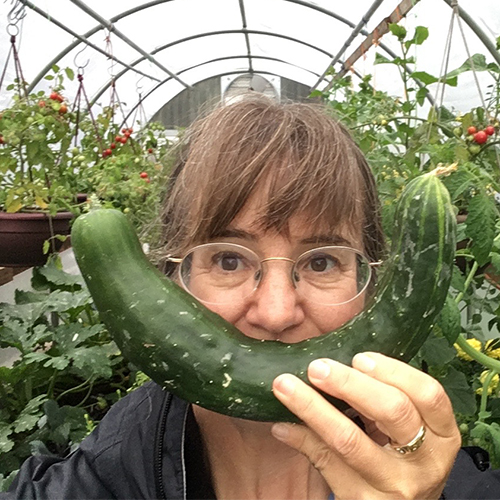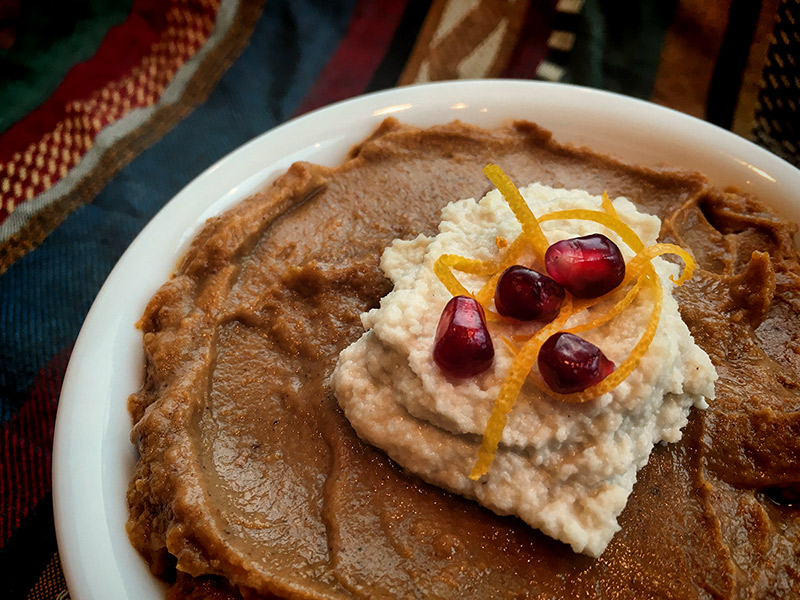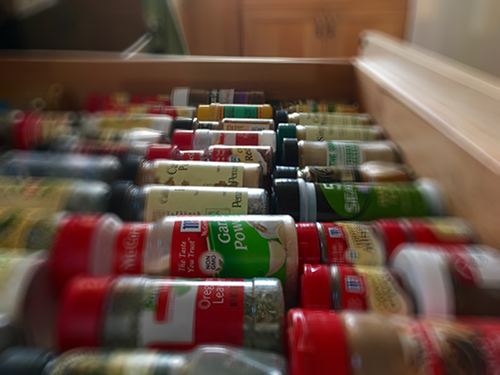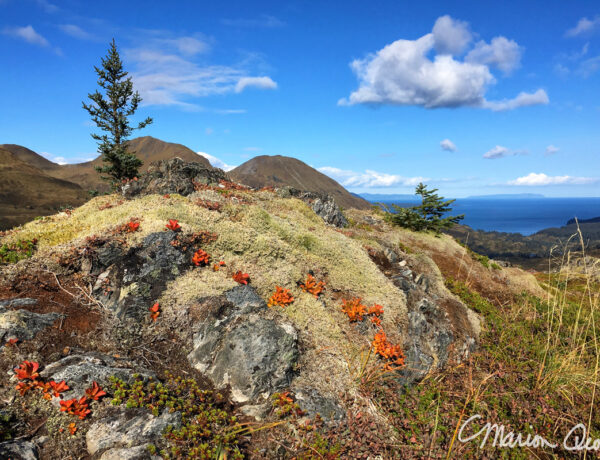Our food journeys are most pronounced during the holiday season. We wrestle with thawed-out turkeys, shop for once-a-year ingredients, and open cookbooks to pages stained with last November’s cranberry sauce. For Marty and I, this season opens with dramatic changes as we embrace a plant-based, vegan diet. Our new “no meat, no dairy” mantra means restocking the pantry from top to bottom: Out with butter, cheese, and milk; in with more fruits, veggies, nuts, and whole grains. And tofu.
Tofu. That bland, soggy, and rectangular solid is America’s most popular meat alternative. (wheat gluten is a better protein alternative, but that’s another story). Meanwhile, I mention tofu because it helps form the base of my new favorite pumpkin pie recipe, replacing my multi-layered, Northern Lights Pumpkin Pie recipe that held the top post for many years.
Fragrant with cinnamon, cloves, ginger, and allspice, this recipe which I’m calling Pumpkin Pie for the Soul, delivers a silky, rich experience. Made without eggs or milk, though you wouldn’t know it. “You can fool a lot of people,” says Food.com. “They can’t believe it’s made with tofu.”
The recipe I’m sharing began as a Food.com recipe. Then I added my own twists. It’s great as a stand-alone (crust-free) custard, but for some folks, a pie isn’t a pie without a crust. And since we’re in discovery mode, take a look at the pie crust recipe that follows. It’s magic, requiring just two ingredients. To top it off I invite you to try the cashew topping that resembles a rich, whipped cream.
Pumpkin Pie for the Soul
2 cups pureed pumpkin, butternut squash, sweet potato or yam
3/4 cup brown sugar
1/2 teaspoon salt
2 teaspoons ground cinnamon
1/2 teaspoon ground ginger
1/4 teaspoon ground cloves
1/4 teaspoon allspice
1/8 teaspoon nutmeg
1 (10 oz.) package soft tofu (not low fat)
1/8 cup molasses
1 pie shell (recipe follows)
Preheat oven to 350 degrees F. Cream all ingredients in a food processor. Pour mixture into pie shell and bake for about 50 minutes. Serve warm or chill and top with cashew cream (recipe follows pie crust recipe).
Two-Ingredient Pie Crust
While researching dairy-free pie crust recipes I discovered the 2-Ingredient Pie Crust on Helyn’s Plant-Based Kitchen blog. “Lo and behold. A perfect crust!” she says. “So simple and so nutritious. I was amazed, astounded and shocked that no one had thought of this before.”
- 1-1/2 tightly-packed almond flour (use 2 cups for a deep dish pie)
- 1 tablespoon ground flax seed (If all you have is whole flax seed, simply grind them in a nut/seed grinder or coffee grinder)
Preheat oven to 350 degrees F. Mix flax meal with 3 tablespoons water and set it aside for 10 minutes. Process almond flour in a food processor and while it’s running pour in the flax mixture. Pulse until the dough is soft, smooth, and sticking together. Drizzle in more water if needed. Turn dough out onto a sheet of plastic wrap, press it together tightly, shape into a disc, and chill for 30 to 60 minutes.
Roll the dough in between two sheets of plastic wrap and then turn it out into a pie plate, leaving a sheet of wrap on top. Press the dough up the sides of the pie dish. If it doesn’t look perfect, don’t worry. This is not a competition. Finish the edges using your fingers or a fork. Dock the crust (poke it all over with a fork). Bake for 15 minutes until the edges of the crust are golden.
Cashew cream topping
 Changing to a vegan diet has been fairly seamless since I love to cook. (Every summer I develop menus for 100+ gourmet dinner cruises). Yet I was pleasantly surprised when I learned about this multi-purpose sauce that required no sour cream. Many thanks to Rip Esselstyn’s New York Times bestseller, Plant-Strong.
Changing to a vegan diet has been fairly seamless since I love to cook. (Every summer I develop menus for 100+ gourmet dinner cruises). Yet I was pleasantly surprised when I learned about this multi-purpose sauce that required no sour cream. Many thanks to Rip Esselstyn’s New York Times bestseller, Plant-Strong.
Sweet or savory, this creamy topping is an easy to make and versatile, dairy-free recipe. Made thick and seasoned with herbs, it’s delicious on crackers, used as a dip, or a spread for burgers and wraps. Add a little more liquid and flavor on the sweet side, it becomes a topping for cakes and pies that holds up well, unlike traditional whipped toppings.
Directions: Cover 1-1/2 cup raw cashews with water (add enough to cover with an inch of water) for a few hours or overnight. Blend in a food processor or high-speed blender until smooth, adding water to make the thickness you like. Store in the fridge or freezer. For a sweet topping, blend in 1/2 teaspoon vanilla or 2 teaspoons maple syrup and 1/2 teaspoon lemon juice.
Nothing will benefit human health and increase chances for survival of life on earth as the evolution to a vegetarian diet.
—Albert Einstein
I just turned 60, so why vegan?
 While Marty and I have personal (health) reasons for avoiding meat and dairy, the over-riding facts spur us on. Check this out: One in three Americans and one in six children are obese. We’ve heard all this before–maybe numbing us with such figures–but you’d be crazy to ignore these recent findings from the Centers for Disease Control and Prevention (CDC): Nearly half of all Americans use some kind of prescription drug and nearly one out of every two adults have at least one chronic illness.
While Marty and I have personal (health) reasons for avoiding meat and dairy, the over-riding facts spur us on. Check this out: One in three Americans and one in six children are obese. We’ve heard all this before–maybe numbing us with such figures–but you’d be crazy to ignore these recent findings from the Centers for Disease Control and Prevention (CDC): Nearly half of all Americans use some kind of prescription drug and nearly one out of every two adults have at least one chronic illness.
In an article published in the Cardiology Advisor, Heart Disease, Stroke Among Top 5 Causes of Death, Per CDC, heart disease continues to top the list of likely cause of death among Americans.
Despite doctors’ attempts to medicate away our illnesses, Americans are sicker than ever.
So what is the leading cause of heart disease? Plaque. According to the Mayo Clinic, “Plaque buildup thickens and stiffens artery walls, which can inhibit blood flow through your arteries to your organs and tissues.” The bottom line: heart disease is correctable by adopting a healthy diet, getting exercise, achieving an optimal weight, and by not smoking.
For decades, the studies have been mounting: One of the fastest ways to stop heart disease in its tracks is by adopting a plant-based diet. In the Harvard Medical School’s Heart Health Letter the article, Halt heart disease with a plant-based, oil-free diet supports that eating more plants is the key to optimum health. “Diets that emphasize vegetables, whole grains, and legumes can even reverse the amount of cholesterol-clogged plaque in your arteries.”
You can’t be an environmentalist if you’re not eating a plant-based diet. And you can’t walk the walk in the world of the future, the world ahead of us, the world of our children, not eating a plant-based diet. — James Cameron, film director
The evidence over the last 25 years supporting a low-fat, plant-based diet is overwhelming. Just ask former President Bill Clinton who, after undergoing quadruple bypass surgery in 2004 and another surgery in 2010 to insert a pair of stents, regained his health and lost 24 pounds after adopting a plant-based diet.
So as you sit down to your Thanksgiving dinner remember to give thanks. Then ponder what you’re eating. If you’re inwardly flustered and confused, consider what Bill Clinton shared in his interview with AARP, “I wanted to live to be a grandfather,” he said. “So I decided to pick the diet that I thought would maximize my chances of long-term survival.”
Thank you so much for visiting. Happy Thanksgiving to you all,

P.S. Who’s eating a plant-based diet:
- World-famous track runner and Olympic gold medalist Carl Lewis says he had the best race of his life at the 1991 World Championships, after he turned vegan to prepare for the race.
- Mahatma Gandhi
- Former heavyweight boxing champion Mike Tyson turned vegan in 2010, and has since loss 100 pounds.
- Leonardo da Vinci
- Former vice-president Al Gore
- And the list goes on…





No Comments
Melissa
November 21, 2016 at 1:39 PMMarion, I’ve read very different opinions on cold pressed oils (some say the manufacturers lie). I agree the less processing of any food, the better. When I cook with olive oil I use very little and not on a high heat. Buy small amounts at a time. Like you said, it’s a new path and I am sure you will find your way to better health! M.
Melissa
November 21, 2016 at 12:25 PMI have eaten pumpkin soy pie and it’s okay, your recipe looks great! Don’t eat pie crust but do make it for those who like crust. Glad to see you didn’t use a soy “whipped cream”, nasty stuff. Could also make a lovely fruit crisp for dessert. Think one is better off having a little real cheese and fish once in a while than eating some processed soy “substitute” food three times a day. We always have pickles, olives and nuts in the shell on Thanksgiving. When having vegan friends over I make hummus instead of a dairy based dip. Cook canned chickpeas with some garlic cloves and then blend with olive oil and lots of lemon juice. Serve with pita and raw onion wedges. Did you really give up all oils?
marionowen
November 21, 2016 at 12:45 PMWe gave up the processed oils, Melissa, and eat more nuts, seeds, avocados and other sources of natural oils. I know, I know, several people have asked me, “What’s wrong with olive oil and vegetable oil?” After all, vegetable oil has the word “vegetable” in it. And last October we visited friends in Italy who have their own orchard and gave us a gallon of oil from their trees, we had to wonder, too. And we did a lot of research and soul-searching. Thing is, as explained in the “Plant-Strong” book I refer to in my blog post, moderate amounts of unsaturated fats can be found in nuts, olives, etc. but through the manufacturing process (adding hydrogen atoms under heat and pressure for example) but all oils are just liquid fat — in a way that’s a far cry from original fruits, nuts, seeds and veggies.
Physiologist Dr. Ray Peat noted (in Plant-Strong), “All oils, even if they’re organic, cold-pressed, unprocessed, bottled in glass, and stored away from heat and light, are damaging. These oils have no shelf life at all … and when they’re warmed to body temperature, they disintegrate even faster. Once ingested, they bind with cells and interfere with every chemical reaction in the body. The results are hormone imbalances, inflammation, and all kinds of illness.”
Oils damage the endothelial lining in our blood vessels by causing arteries to constrict, promoting the buildup of plaque….
Most Americans are downing 3-5 tablespoons a day of olive oil by dipping their bread in it, sautéing with it, drizzling it over salads and baking with it. Olive oil is 100 percent fat and it’s more calorie dense than any other food on the planet. It’s 14.5 percent saturated fat and other than trace amounts of vitamin E and K, it’s all empty calories.
BOTTOM LINE: My husband had a mini-stroke last month and his doctor recommended adopting a plant-based diet. So there we are…
daryleone
November 21, 2016 at 10:44 AMEverything in moderation, Marion, emphasis on everything … as in omnivorous.
One should consider the actuarial tables of the life insurance industry. When comparing the omnivorous meat eaters with the vegan/vegetarians, the group that lives longer is not the vegetable-only eaters.